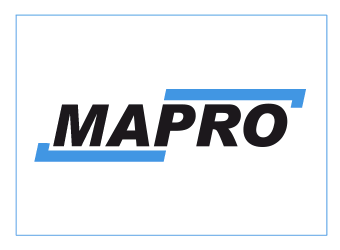Weekly commodity price report
Here are the market prices of various types of commodity plastics PE-LD, PE-HD, PP and PS in Central and Eastern Europe with a delay of 5 weeks. The data was processed by our partner myCEPPI.
Are you interested in current prices for commodity plastics? You can order Weekly polymer price reports from our editors.
Prices for this week 47/2020
The prices of “commodity” polymers were affected by the following factors last week:
- BRENT oil price 44.20 USD/barrel, slightly increasing prices
- NAPHTHA (European) 364.24 USD/t, rising prices
- EUR/USD: 1,1859, a stagnant Euro
- The zloty and the Czech koruna continue to strengthen,
- SABIC's Wilton PE plant shut down (400 kt/year capacity),
- Force majeure at Borealis' Porvoo plant (390 kt / year ethylene, 220 kt/year propylene, 140 kt/year LDPE, 255 kt/year LLDPE and 220 kt/year polypropylene) it is not yet known when it will restart LyondellBasell's LDPE plant in Aubette restarted (320 kt / year capacity)
- Karpatneftechim is under maintenance, HDPE production also stopped, (107 kt/year capacity),
- Worsening COVID-19 situation in Central Europe, growing uncertainty
- Rising prices, weakening demand
Unexpected turbulence has developed around polyethylene grades in recent weeks. The shutdown of SABIC's Wilton plant was theoretically offset by the restart of LyondellBasell's plant in Aubette. However, a consistently more expensive product cannot replace the lost cheaper one in Central Europe. The situation was further aggravated by the low availability of LDPE in Serbia, Romania, Hungary and Slovakia. The shutdown of Borealis' Finnish plant only exacerbated the situation. Thus, last week - in the second half of November - LDPE prices increased signicantly by 40-70 €/t in Central Europe. Producers (Belarus and Serbia) who offered their products at the lowest prices so far have raised the most. Overall LDPE demand is not strong. There is no panic in the market. Companies do not buy at these increased prices. Most are condent that uncertainty over the short month in December and the covid epidemic will also dampen demand. Demand is also reduced by the fact that at this increased price level, it is no longer worthwhile for contracted customers to maximize their bonuses either. Now plastics converters are buying who procure on a spot basis or postpone their purchases until the second half of the month. They are now forced to buy at increased prices to cover their production. Not only did the price of rst-class LDPE materials rise, but so did the prices of “near to prime” and “off-grade” materials. In the case of HDPE, there were also producers who increased their prices to a lesser extent.
As a result of the expected weak demand in December, polymer producers will be forced to curb price increases or even reduce their prices compared to the current price level. Compared to early November, LDPE prices are now € 50-70 higher. This is due to poor availability, not strong demand. Although LDPE converters, mainly packaging manufacturers, reported a good order backlog, it was weaker than usual in November. The epidemic is also having an impact on orders, with less than the usual Christmas pre-orders for packaging materials. Converters' customers do not dare to stock up or take risks either. For the time being, the change in oil and naphtha prices compared to a month ago does not predict a more serious monomer price increase, the most likely price increase of 10-30 €/t is ethylene (C2) and propylene (C3). Thus, a signicant LDPE price increase of more than € 30-50 at the end of the year (December) would be a very unfriendly move towards plastics converters. Most polymer manufacturers are thinking of increasing prices compared to early November. However, nding the optimum rate of increase now requires great care. Due to the epidemic, converters and traders are also more careful with stockpiling. No big advance purchases are expected in December. Even if tight availability persists until the end of the year, and probably in the rst half of January. If polymer producers come out with too high prices in December, they will further reduce demand. There will be no time for correction. Converters place orders in the rst 2 weeks of December, followed only by logistics. Converters are likely to grant year-end holidays sooner, so the Christmas break will in many cases begin as early as December 14th.
In the case of PP, the availability is good. Availability issues are only with the usual, inexpensive PPC with high melt ow index. That is, it is no longer available cheaply, under 950 €/t. The prices of almost all PP grades have risen over the past week, with the rise in polyethylene prices also dragging polypropylene grades. Meanwhile, PPH prices in the SCE region are more unchanged, and even very cheap offers have appeared in Northern Macedonia for Raffia grades. This, in turn, suggests that the rising price trend will not be sustainable in December.
The polystyrene market, with the exception of EPS, is now driven by shortages. The European supply of GPPS, HIPS and ABS is tight. The price of the latter is racing sharply upwards in the spot markets. But this steep price increase is typical of plastics used in all technical elds (PC, PA, POM, etc.). In addition to demand from the Far East, European demand is also picking up. While traditional trade chains and routes are difficult to operate, in some cases they have been disrupted. As a result, arbitrage opportunities have also narrowed. We also expect tight supply in December and the rst half of January and further rising prices for ABS.
Polyolefin grades
In the third week of November, LDPE prices ranged from 940 to 1,030 EUR/t. The Serbian and Belarusian LDPE producers also raised their prices signicantly. There is clearly a shortage in the market. Few transactions took place, partly due to availability and partly due to high prices. Most converters had already procured the feedstock needed for November earlier this month. We expect rising prices in December (compared to early November). However, continuing sharp rise in prices over the last 2 weeks is unlikely. The change in prices will slightly exceed the increase in monomer prices. Supply will remain tight in both December and the rst half of January.
In the third week of November HDPE prices were in a range of 860-1,000 €/t in Central Europe. What happened was already visible last week. Both the bottom and top of the price band rose after the Serbian polymer producer also raised prices earlier this week. Availability is poor here as well, and there is even a shortage of lm grades in the Baltics. Demand was not strong either, there were few transactions. Typical transaction prices ranged from 830 to 920 EUR/t last week. In December, prices are expected to rise compared to early November prices. it is likely that the current price level will continue to roll into November.
In detail
- HDPE BM: 880-1,000 €/t,
- HDPE IM: 820-950 €/t,
- HDPE FILM: 880-1,000 €/t,
In the third week of November, HDPE (100) prices ranged from 990 to 1,060 EUR/t. Due to the end of the pipe season, demand is steadily weakening. In December, prices will rise due to the expected monomer price increase. In the third week of August, the range of LLDPE C4 prices was 860-1,000 €/t. Prices have risen slightly, mainly due to a contraction in supply due to the shutdown in Porvoo. Second, prices followed the generally rising trend of PE prices. However, unlike other polyethylene grades, there is availability, although supply is limited.
In the third week of November, mLLDPE (C6) prices were in the price range of 880-1,160 EUR/t. They did not change compared to last week. This is because they are used in relatively small quantities by converters and have relatively large stocks. Not a typical spot market product. Availability is good.
In the third week of November, typical PPH Raffia prices ranged from 880 to 1,020 €/t, depending on the producer and grade. The price increase continued. The lowest prices were in the SCE region, where weak demand did not support price increases. However, in the MCE and NCE region, PP producers and traders made small price increases. There is availability, demand is weakening. December prices will move along with monomer prices.
In the third week of November the prices of PPH IM non-special grades with low and medium ow melt index were in a range of 870-950 €/t last week in Central Europe. They increased slightly compared to the previous week. The prices of products with a high ow index were in a range of 900-990 €/t. The cheapest prices were measured last week in the SCE region. Demand is weaker than usual in November. This is due to the fact that there are fewer Christmas pre-orders and even in many cases they have been completely missed in the SCE region. Due to weaker-than-expected demand and rising feedstock prices, quite a few smaller converters plan to have a longer Christmas shutdown this year. They are waiting for what January will bring. As a result, only a small price increase in December, not exceeding the change in the price of propylene monomer, is likely in December.
In the third week of November typical PPC prices were in a range of 950-1,070 €/t in Central-Europe. The typical transaction price range was 970-1,050 €/t. Availability of grades with high melt ow index in spot markets is poor, however, there are no serious supply problems. In December, prices will follow the propylene monomer.
PPR prices for the third week in November were in a range of 990-1,090 EUR/t last week. They did not change compared to last week. Demand is weaker than usual, the pipe season is over, and there is also less PPR in the IM area.
Polystyrene grades
EPS prices were in a range of 1,010-1,090 €/t last week. The insulation material season is over. Demand is low. There was just a low number of transactions last week. In December, prices are likely to follow the price change in SM.
In the third week of November, GPPS prices were in a range of 950 - 1,100 EUR/t. The cheapest prices were still measured in Poland The cheapest products came from import sources outside Europe. The availability of European-made materials is poor. Especially those used in the technical eld. The recovery in demand in the Far East is coupled with poor European availability. Further price increases are likely in December. HIPS prices were in a range of 1,000-1,200 €/t. The supply of European types is limited, but there are few imports from outside Europe. However, the impact of the epidemic is also being felt among nished products, with fewer year-end orders. Converters expect a weaker-than-usual December.
In the third week of November the natural ABS price range was 1,560-1,800 EUR/t. Prices are rising sharply. Price increases are not only a Central European phenomenon but also a world phenomenon. Which now affects all plastics used in engineering, from polycarbonate to polyamide. There was a converter that received a modied, raised price from its supplier three times from the quote at the beginning of the month to the order. As availability has narrowed dramatically and no change is expected in December, it is likely that even in January, the market will be characterized by extremely tight availability and high prices. It could even happen that the price of ABS will again exceed 2,000 EUR/t at the end of the year in the event that the prices of both SM and butadiene rise signicantly.
| Type | Price |
|---|---|
| HDPE blow molding | 903 € / t |
| HDPE film | 911 € / t |
| HDPE injection molding | 890 € / t |
| HDPE pipe (100) | 1030 € / t |
| LDPE film | 984 € / t |
| LDPE general purpose | 984 € / t |
| PP co-polymer injection molding | 1014 € / t |
| PP homo-polymer fiber | 950 € / t |
| PP homo-polymer injection molding | 947 € / t |
| PPR | 1055 € / t |
| GPPS | 1047 € / t |
| HIPS | 1131 € / t |
| EPS | 1041 € / t |
myCEPPI – a new voice and new approach on the plastics industry consulting and business intelligence market. With our expert advice, you can get a detailed, up-to-date and tailor-made picture of the Central and Eastern European plastics market and its main trends, data, news and key players.
Our services rely on our personal, regular and in-depth relations with players of the CEE plastics industry.
Each month, we conduct hundreds of interviews and telephone calls with industry players – plastics converters, traders, resin manufacturers – and we are also present at the biggest regional plastics trade fairs and conferences.
The information we collect in the process forms the basis of our weekly price report and market analysis; it feeds into our plastics industry company database; and it serves as the starting point for our multi-level consulting services for companies that need help sizing up, entering or navigating a specific market.
Our experts possess decades of plastics industry experience, as well as fluency in several regional languages.
Our partners include
- key players of the CEE plastics industry – the resin
- master-batch and machinery manufacturers
- distributors, and plastics converters that shape market trends across the region.
We would be happy to welcome you as a partner; please do not hesitate to contact us!
(László Büdy, Managing director, head of consulting)
Price history
- 2024:
- 2023:
- 2022:
- 2021:
- 2020:
- 2019:
- 2018:
- 2017:
Latest Classifieds
-
05.03.2024 | ID: 202418726
Top Advert Cooperation: Nezaplatené faktúry firmou Industry Storm s.r.o.
19.04.2024 | ID: 202418993
-
18.04.2024 | ID: 202418992
-
18.04.2024 | ID: 202418991
-
18.04.2024 | ID: 202418990
To purchase: PPSU regrind banner
17.04.2024 | ID: 202418988
For Sale: Packaging press PL 12
17.04.2024 | ID: 202418987
To purchase: POM C regrind colour, white, natur
17.04.2024 | ID: 202418986
-
16.04.2024 | ID: 202418984
To purchase: PPSU regrind banner
17.04.2024 | ID: 202418988
To purchase: POM C regrind colour, white, natur
17.04.2024 | ID: 202418986
To purchase: Package quality LDPE film. 500 t/month
15.04.2024 | ID: 202418966
To purchase: Dirty granulates from ground
15.04.2024 | ID: 202418964
To purchase: PC and PMMA waste, regrinds, lumps etc.
11.04.2024 | ID: 202418943
To purchase: PET transparent trays, only Central Europe due to shipping costs
10.04.2024 | ID: 202418939
To purchase: PA6.6 GF25, TECHNYL A218, original
09.04.2024 | ID: 202418928
-
09.04.2024 | ID: 202418927
-
09.04.2024 | ID: 202418924
-
05.03.2024 | ID: 202418726
Top Advert -
18.04.2024 | ID: 202418992
-
18.04.2024 | ID: 202418991
-
18.04.2024 | ID: 202418990
For Sale: Packaging press PL 12
17.04.2024 | ID: 202418987
-
16.04.2024 | ID: 202418984
-
15.04.2024 | ID: 202418980
For Sale: PP vstrekovací - drť biela
15.04.2024 | ID: 202418979
For Sale: Drť EVA Escorene UL00514
15.04.2024 | ID: 202418978
Upcoming Events
22.04.2024 - 26.04.2024 | Hannover
22.04.2024 - 26.04.2024 | Sao Paulo
23.04.2024 - 25.04.2024 | Maastricht
23.04.2024 - 26.04.2024 | Shanghai
23.04.2024 - 26.04.2024 | Wels
23.04.2024 - 25.04.2024 | Varšava
06.05.2024 - 10.05.2024 | Orlando
Saudi Plastics and Petrochem 2024
06.05.2024 - 09.05.2024 | Rijád
06.05.2024 - 09.05.2024 | Stuttgart
16.04.2024
16.04.2024
17.04.2024
17.04.2024
22.04.2024
Festival of personnel and talent development
16.04.2024
17.04.2024
Training - Injection moulding technology II.
17.04.2024
17.04.2024
Training - How to crack plastic
22.04.2024
Job offers
-
11.04.2024
Plastic worker, gluing staff - FORM s.r.o.
10.04.2024
Logistics, warehouse and shipping supervisor - KNP s.r.o.
09.04.2024
Warehouseman - AIS Automotive Interior Systems Slovakia s.r.o.
09.04.2024
Sales representative / sales specialist - Plastcom, spol. s r.o.
04.04.2024
Maintenance and operation of the production line - Plastcom, spol. s r.o.
04.04.2024
Quality control technician - ESOX-PLAST s.r.o.
04.04.2024
Master of professional training - ESOX-PLAST s.r.o.
04.04.2024
Store manager - Ecocycle s.r.o
25.03.2024
Branch Dictionary






